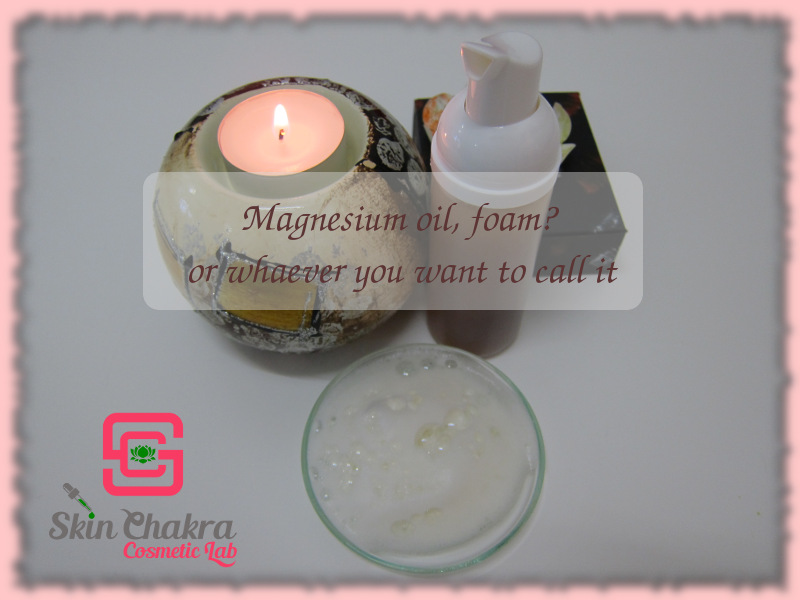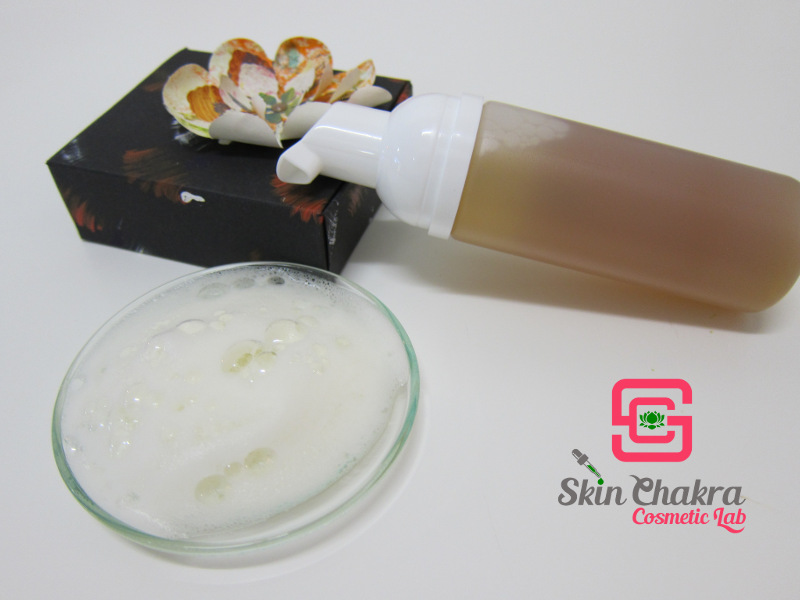
Sonntag, 12. November 2017
The mystery and myth of Magnesium oil
"Magnesium oil" which obviously is no-oil at all is very IN at the moment among DIY crafters. There are many myths and misleading information on pseudoscientific blogs around this product which is apparently a high concentration of a magnesium salt such as sulphate or chloride in water (you see? no oil at all!!!)
Alone @Formula Botanica, we have several questions regarding the myth of magnesium oil per week. Those who promote, make and sell this product make such unrealistic and exaggerated health claims about this product and extremely misleading DIY tutorials that it's wonder why nobody has suffered serious damages by using these home made or store bought products (or perhalps we're unaware of such cases).
As far as I could understand from questions coming to us, people claim that by making a saturated solution of magnesium chloride or magnesium sulfate in water, the product would have such an alkaline pH and low water activity that there would be no need for any preservative. I've individually answered to the question of "do my magnesium oil need a preservative?" at least 100 times during this year and I'm going to make a public response so that people searching for the answer hopefully find this blog and the answer and that there would be no need in the future to answer this question individually.
1- Magnesium is extremely sensitive to pH and would sediment at high pH levels. Magnesium sulfate and chloride have a pH lower than 5 when dissolved in water. Increasing the pH to levels higher than 6,5 causes a sedimentated and flocking out of Magnesium hydroxide. Not only preparing a magnesium solution with a high pH (the so-called magnesium oil with a high pH) is technically impossible, it would be extremely unhealthy to apply something with a high pH to the skin
2- Water activity is a dynamic property and would change by temperature, salt concentration, concentration of other additives in the solution just to name a few factors. Unless you have an apparatus to measure the water activity of the solution under each specific condition, making a claim that a 25% magnesium chloride solution has a low water activity and is hence self-preserving is extremely wrong and misleading.
3- Generally I find the term "magnesium oil" wrong and misleading and do not believe in all of those exaggerated claims and the fuss they make around this product but I admit that magnesium has skincare benefits, the least of them are hair and skin conditioning.
4- To help you create reasonable and safe products with Magnesium, we're going to share a few products we've made with Magnesium Chloride. We share these recipes without making any health claims.
To start with, I've chosen an easy to make facial cleansing foam (everybody knows that I'm obsessed with foams)
I originally designed this product as a facial cleanser but the foam was so fluffy and soft that I used it as a shower foam as well and despite the very low surfactant concentration I was quite satisfied with the performance.
Before we start:
1- Magnesium salts are not compatible with anionic surfactants. If you decide to use this concept and use other surfactants make sure you're using nonionic and amphoteric surfactants.
2- Magnesium salts are very sensitive to pH. Make sure the pH is lower than 6 as you add the Magnesium to the solution and adjust the pH very gradually and little by little to avoid a sudden jump to a high pH which would cause your Magnesium to flock out of the solution.
3- When making a foam cleanser, you need a low viscosity so that the foam dispensing pump can create a nice and thick foam. If the viscosity is high (not even as high as a cleansing gel, you may even not distinguish it from water), the pump will spit something which is not the least similar to the foam we wish to create. To avoid increasing viscosity, we need to use a very low surfactant concentration. This low concentration of surfactants is usually not enough to solubilize the essential oil or your lipophilic preservatives. Here we'll need a solubilizer to help solubilize the essential oil.In this formulation, we've used our symbiosolv clear plus which is going to replace both symbiosolv clear and symbiosolv XC from May 2018. We've added plant based pentylene glycol both to boost the solubilizer and the preservative system and add some additional moisturizing properties to the product.
Formulation:
| Phase A | |
| Organic lemon verbena hydrosol | to 100,0% |
| Magnesium Chloride | 10,0% |
| Cocamidopropyl betaine | 10,0% |
| Yucca extract | 2,0% |
| Sodium lactate | 1,0% |
| Panthenol | 0,5% |
| Organic aloe juice powder 200:1 | 0,5% |
| Phase B | |
| symbiosolv clear plus | 3,0% |
| Plant based pentylene glycol | 2,0% |
| Orgaic bergamot essential oil | 0,4% |
| Organic grapefruit essential oil | 0,5% |
| Cedarwood oil | 0,1% |
| Phase C | |
| L-Arginine | to adjust the pH |
| Dermosoft 1388 eco | 2,5% |
| Versatil BL | 0,5% |
Procedure:
1- Blend all the ingredients in phase A and B separately at room temperature. Aloe powder needs a little bit of stirring to fully dissolve. A magnetic stirrer is very helpful but not necessary
2- As both phases are homogeneous, slowly add phase B to A and blend.
3- Prepare a 10% dilution in distilled water and measure the pH. In our case, it was around 4,5. This pH is very low for the preservative blend and we have to increase the pH before adding the preservative. We used L-Arginine to increase the pH. You can use other bases such as sodium hydroxide or sodium bicarbonate if you want.
4- Slowly increase the pH in small steps. A sudden increase of the pH would cause the Magnesium to flock out of the solution and ruin your whole formulation. You may need several steps of adding L-Arginine to the solution and measuring the pH after each addition. PATIENCE
We added a total of 0,3 gr of L-Arginine to bring the pH to around 5,3.
5- You can add the preservative (L-Arginine ) at a pH higher than 5,2. This preservative blend slightly increases the pH. Our pH jumped to 5,4 which is perfectly in the range of the preservative efficacy.
6- If you accidentally overdose the L-Arginine and the pH is above 5,5 after adding the preservative, reduce the pH by adding lactic acid to the solution. The final pH of your foam should be between 5,3-5,5 with this preservative system.
7- Take your microbial and stability samples and fill the product in a foam dispenser.
Enjoy the skin feel and the fluffiness of the foam.
It's your turn to make a magnesium foam. Feel free to send us your questions and we'll be at your disposal. If you post any photos on Instagram, don't forget to tag @SkinChakra.
BeHappy and have fun


